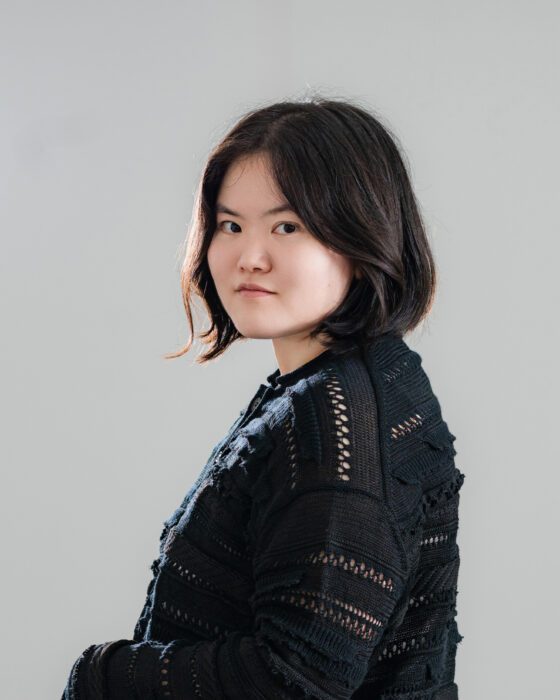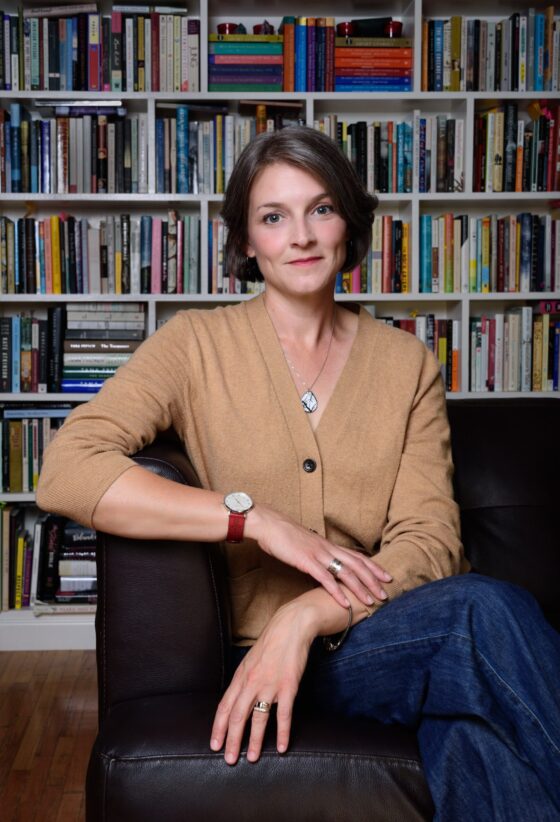
Twice a month, The Rumpus brings your favorite writers directly to your IRL mailbox via our Letters in the Mail programs. We’ve got one program for adults and another for kids ages 6-12.
How we already looking ahead to apples and crisp leaves and back-to-school? Next month, subscribers will be receiving letters from Myriam J. A. Chancy and Anita Kharbanda, and Anita Kharbanda and Misty Wilson, respectively.
Letters in the Mail
Adriana Trigiani is the New York Times bestselling author of twenty books of fiction and nonfiction, including The Shoemaker’s Wife. Her books have been published in thirty-eight languages around the world. She is an award-winning playwright, television writer/producer, and filmmaker. Among her screen credits, Trigiani wrote and directed the major motion picture adaptation of her debut novel, Big Stone Gap. Adriana grew up in the Blue Ridge Mountains of Virginia, where she co-founded the Origin Project. Trigiani is proud to serve on the New York State Council on the Arts. She lives in New York City with her family.
The Rumpus: What book(s) made you a reader? Do you have any recent favorites you’d like to share?
Adriana Trigiani: I’m going to choose one: The Story of Silent Night by John Travers Moore. This book was gifted to me on my 10th birthday by my Aunt Irma, and I loved it. Recent favorites: I’m going with nonfiction because it fuels my creativity: Greenlights by Matthew McConaughey, Unrequited Infatuations by Steven Van Zandt, Bittersweet by Susan Cain and The Biography of Barbara Pym. If you’d like more titles, please read the By The Book column I wrote in The New York Times. It’s chock full of great selections.
Rumpus: How did you know you wanted to be a writer?
Trigiani: When I was a kid, I was fascinated by nuns- and when I asked them why they were nuns they told me it was a calling. So, from a very young age, I listened for the clues and hopefully answers of how I would spend the time given to me. I was not interested in the result, only the process. So, at first, I thought I would be an artist, and of course writing is an art. Writing became my companion activity- if I wasn’t reading, I was writing, scribbling, doodling. I would make up names- which most young girls would think meant I was naming future children. I wasn’t. I was naming characters.
Rumpus: What’s a piece of good advice or insight you received in a letter or note?
Trigiani: A woman wrote to me and said, I like your books, but you can do better. Work harder. Instead of being insulted, I thought about her criticism. I took her up on it. I committed to making each novel better than the last. It’s the only yardstick by which I measure myself- the rest, is out of my control. In a sense, she freed me.
Rumpus: Tell us about your most recent book? How do you hope it resonates with readers?
Trigiani: The Good Left Undone is a rich dual narrative timeline story about a contemporary Italian matriarch who knows she is dying and wants to set the record straight. Based on family history and a story I found about the plight of Italian Scots during World War II, it’s a page turner.
Rumpus: What is your best/worst/most interesting story that involves the mail/post office/mailbox?
Trigiani: I love mail carriers. One day, I was writing a scene in my office, when the mailman rang the bell. He took one look at me and said, “Is your husband mistreating you? I’ll teach him a lesson!” I said, “No, no, I’m writing a sad scene.” We had a good laugh.
Rumpus: Is there a favorite Rumpus piece you’d like to recommend?
Trigiani: Really, everything you post and publish has great merit. But, if you forced me to choose, I loved Lyz Lenz’s glorious “Why Writing Matters in the Age of Despair.” I loved it because it speaks to the moment we are living in, and yet has a ribbon of literary ideas in history that matter now. Beautifully written!
Sign up today to receive her letter next month.
Letters in the Mail
Misty Wilson received her M.A.T. from Kent State University and has since taught in a number of positions, including elementary reading intervention, as both a third and a fourth grade classroom teacher, and as a special education tutor. She’s a voracious reader who loves to introduce her students and her daughters to new books. If she’s not writing, you’ll most likely find her eating candy and binge-watching TV with her husband—illustrator David Wilson—or playing with her two young daughters. She lives with her family in Northeast Ohio. Find out more at www.mistywilsonwrites.com
The Rumpus: What book(s) made you a reader? Do you have a childhood favorite you still like to return to?
Misty Wilson: My first memories of being REALLY into reading is in second and third grade, when I read the Baby-Sitters Little Sister series. I’d read The Babysitters Club before that, but this series resonated with me more for some reason. Then I got very attached to The Boxcar Children series. (Both of these now have newer graphic novel adaptations, which I think is so cool!). The Nancy Drew books and Goosebumps were also favorites in elementary school. I am anxiously waiting for my daughters to be old enough for Goosebumps because I can’t wait to read the series with them.
Rumpus: What excites you most about writing books for kids?
Wilson: I think what excites me most about writing books for kids is the idea that they might take something away from something I wrote—whether it be just a laugh, or new knowledge, a new way of thinking about a situation, empathy, or inspiration. I also want kids to be able to see themselves in my books and to relate to them, learn from them, or even just simply be entertained by them. Writing for kids is FUN, and one of my favorite parts of being a teacher is watching kids laugh out loud or cry over a book. It excites me to be part of kids’ lives in that way.
Rumpus: How did you fall in love with writing?
Wilson: I only recently fell in love with writing! I read Raina Telgemeier’s graphic novel Smile a few years ago, and I saw its popularity in my classroom. I remember thinking to myself, “Huh. I think I have a story to tell . . . This is a fun format.” I brought it up to my husband who was already making his own comics, and he was in! I had a blast writing it and seeing the characters come to life as my husband drew me as a twelve-year-old. While I was waiting on my editor to get back to me, I started writing my first novels in other age categories, and I realized, “Wow! This is an absolute blast!” There was sooooo much to learn about writing stories, but as someone who has gone back to college to get three different degrees, I consider myself a life-long learner. And because I truly enjoy writing, it’s been fun to learn all about the craft!
Rumpus: What’s your best advice for creative kids?
Wilson: My best advice for creative kids is to keep going! Keep practicing whatever it is that you enjoy. And if you aren’t sure what you enjoy, try new things. In fact, even if you think you’ve found your passion, I still recommend trying new things. To be honest, I never considered myself creative at all. Then suddenly, I discovered writing and realized I have sooo many stories I want to tell. But it’s taken a lot of practice to get to where I am right now—and it’ll take so much more to get to where I want to be. Whatever your craft is, keep practicing it. Then branch out and see if anything else interests you because you never know what you might be able to create! (For example, drawing well + storytelling = comics/graphic novels!)
Rumpus: Tell us about your most recent book? How do you hope it resonates with your readers?
Wilson: Play Like a Girl is my first book, and it is a graphic memoir (meaning it’s a graphic novel about a period of time in my life, specifically about when I played football in seventh grade). My husband, David Wilson, illustrated it. And I really hope it resonates with readers. I hope that kids might see themselves in it in some way—maybe they are struggling through friend problems, maybe they feel like they don’t fit in, or maybe they are someone who wants to do something that doesn’t fit the “norm” or goes against the grain. And if they do see themselves in the book, I want them to realize they aren’t alone. That they can and should be themselves and eventually, they’ll find the people who get them. And, of course, I hope they’ll follow their dreams, however big or small.
Sign up today to receive her letter next month.





